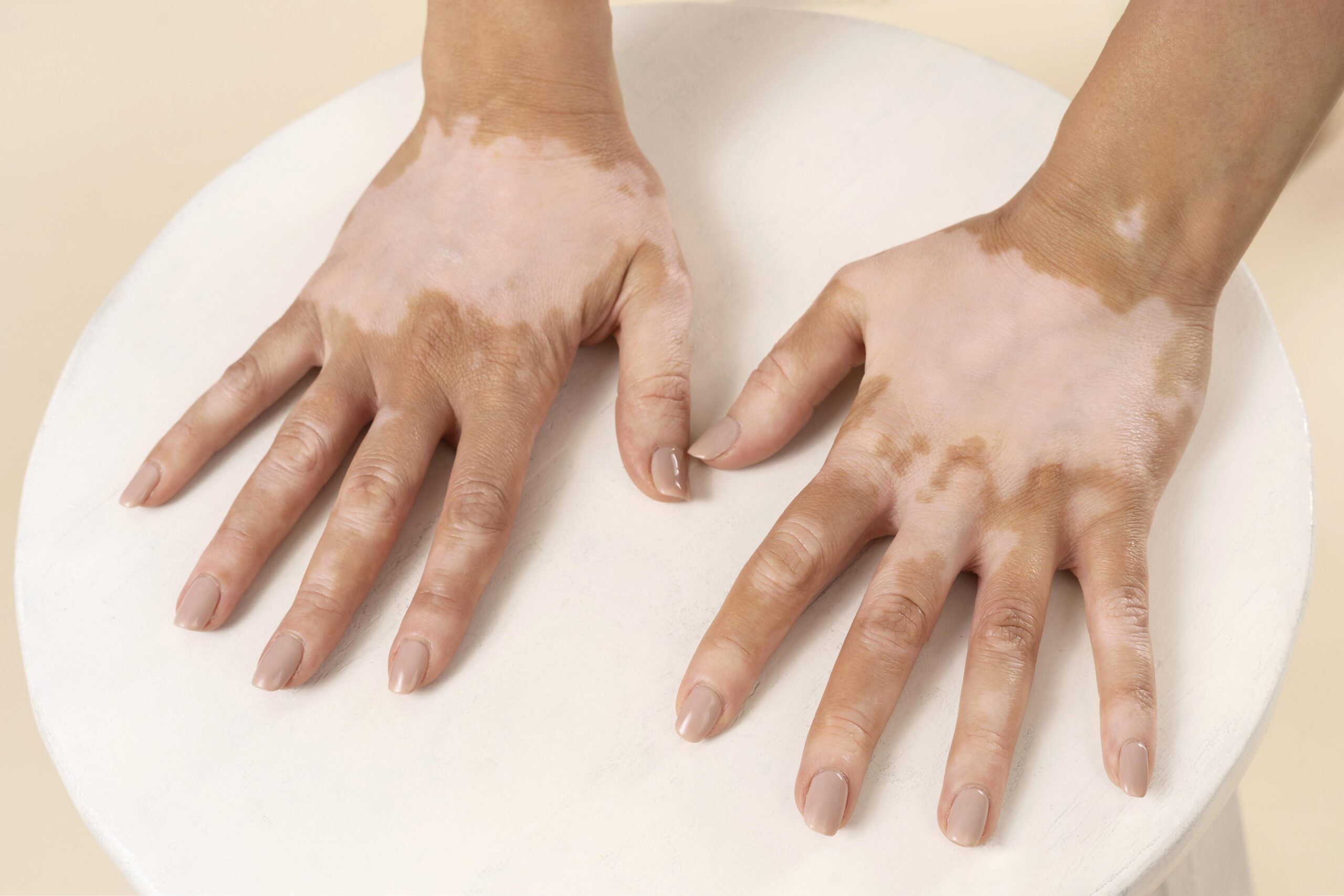Vitiligo is a skin condition that affects approximately 1% of the global population, leading to the development of white or lightened patches on the skin due to the loss of pigment-producing cells called melanocytes. While the exact cause remains unclear, it is widely believed to be an autoimmune disorder where the body’s immune system mistakenly attacks its own melanocytes. This article delves into the autoimmune nature of vitiligo and explores current and emerging treatment options.
What Is Vitiligo?
Vitiligo is characterised by the progressive loss of skin pigmentation, resulting in irregular white patches. These patches can appear anywhere on the body, including the face, hands, and genital areas. The condition affects individuals of all skin types but is more noticeable in those with darker skin tones.
The Autoimmune Connection
Research indicates that vitiligo is an autoimmune disorder, meaning the body’s immune system attacks its own cells. In the case of vitiligo, the immune system targets melanocytes, leading to their destruction and the subsequent loss of skin colour.
Genetic Factors
Studies have shown that vitiligo has a genetic component. Individuals with a family history of vitiligo are at a higher risk of developing the condition. For instance, the risk for an identical twin is approximately 23 percent, and for a sibling, it is about 6 percent.
Immune System Involvement
The immune system’s role in vitiligo is significant. CD8+ cytotoxic T cells and regulatory T cells are involved in the destruction of melanocytes. Additionally, skin-resident memory T cells contribute to the progression of the condition.
Prevalence of Vitiligo
Vitiligo affects approximately 1 percent of the global population. In Europe, the prevalence is about 1.6 percent, in the USA, it’s around 1.4 percent, and in Japan, it’s approximately 0.5 percent. The condition can develop at any age, but often appears before the age of 20.
Treatment Options
While there is no cure for vitiligo, several treatment options aim to restore skin colour and manage the condition.
Topical Treatments
- Corticosteroids: These anti-inflammatory medications can help reduce immune system activity and are often used as a first-line treatment.
- Calcineurin Inhibitors: Medications like tacrolimus ointment can suppress the immune response and are used when corticosteroids are not effective.
Light Therapy
- Narrowband UVB Phototherapy: This treatment involves exposing the skin to ultraviolet light, which can stimulate melanocytes and promote repigmentation. Besides, Long-term follow-up studies have demonstrated that repigmentation achieved through NB-UVB therapy can be stable. A study involving 31 patients with generalised vitiligo found that 16% experienced over 75% stable repigmentation two years after completing a 12-month NB-UVB treatment regimen
- PUVA Therapy: Psoralen combined with UVA light therapy can also be effective in treating vitiligo.
Surgical Options
- Skin Grafting: In cases where other treatments have failed, surgical procedures like skin grafting may be considered to restore skin colour.
Emerging Therapies
- Janus Kinase (JAK) Inhibitors: Medications like ruxolitinib and tofacitinib have shown promise in treating vitiligo by targeting specific pathways involved in the immune response.
- Stem Cell Therapy: Research into the use of mesenchymal stem cells is ongoing, with the aim of modulating the immune system and promoting melanocyte regeneration.
Life with Vitiligo
While vitiligo is not life-threatening, it can have a significant impact on an individual’s quality of life. The visible nature of the condition can lead to psychological distress, including low self-esteem and social stigma.
Psychological Support
Individuals with vitiligo need to seek psychological support to cope with the emotional challenges associated with the condition. A systematic review and meta-analysis revealed that the prevalence of depression among individuals with vitiligo ranges from 21% to 62%, depending on the study and assessment tools used. Thus, support groups and counselling can provide valuable assistance.
Sun Protection
Individuals with vitiligo should take precautions to protect their skin from sun exposure, as depigmented areas are more susceptible to sunburn. Using broad-spectrum sunscreen and wearing protective clothing is recommended.
Real Stories of Vitiligo
Deeming It Normal
Reddit User Sullyville says that their success story with vitiligo isn’t about treatment, but acceptance. They observe their patches like clouds, shifting so subtly they’re barely noticeable. To them, the patches on their face and hands are clouds, and their body is the sky.
Combination of UVB Light Therapy & Topical Creams
Another Reddit User says that they have achieved significant success in treating vitiligo using a combination of UVB light therapy and topical creams (clobetasol and Protopic), beginning treatment in early September. Since then, they have observed approximately 80% repigmentation in the affected areas. They recommend undergoing UVB therapy at a hospital, noting that clinical-grade equipment is generally more powerful—and therefore more effective—than home-use devices.
Living Well With Vitiligo
You can also check out this inspiring and insightful video from the Global Vitiligo Foundation on how to live well with vitiligo.
Vitiligo: A Complex Condition
Vitiligo is a complex autoimmune condition that affects a significant portion of the global population. While there is no cure, various treatment options are available to manage the condition and improve quality of life. Ongoing research into the pathogenesis and treatment of vitiligo holds promise for more effective therapies in the future.
For more detailed information and updates on vitiligo, consult reputable sources such as the American Academy of Dermatology and the National Institutes of Health.
References
Bing.com
National Library Of Medicine






Leave a Reply